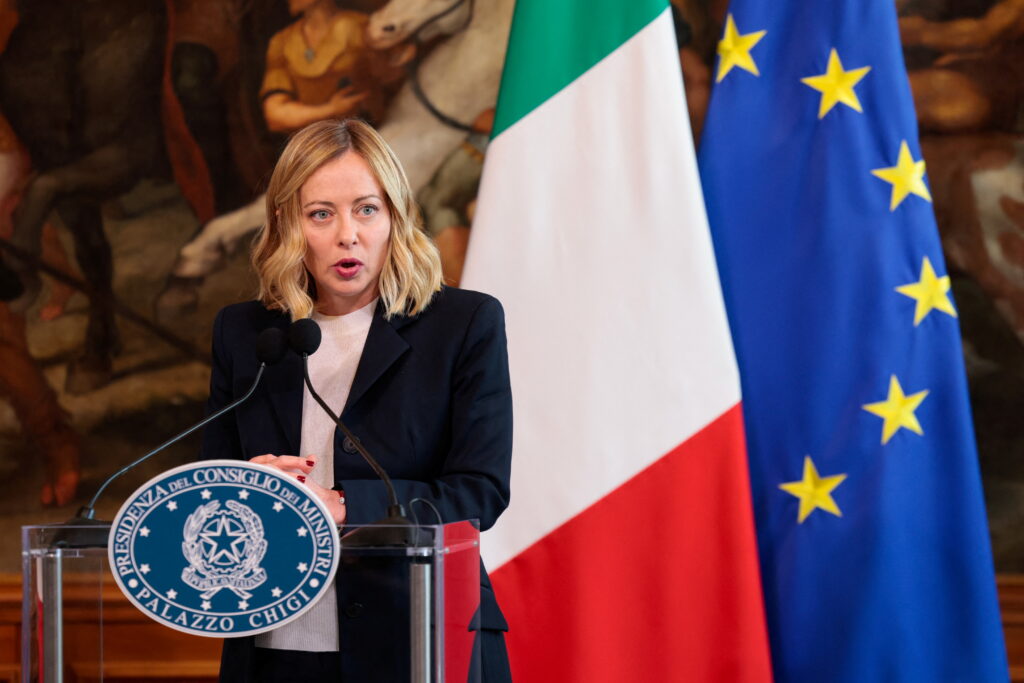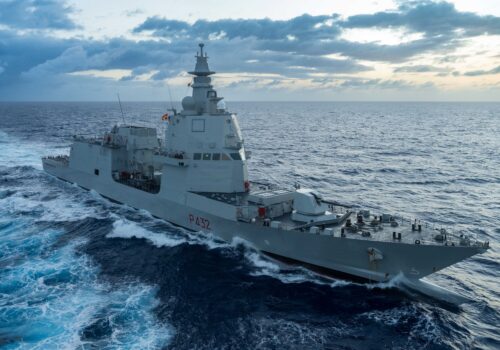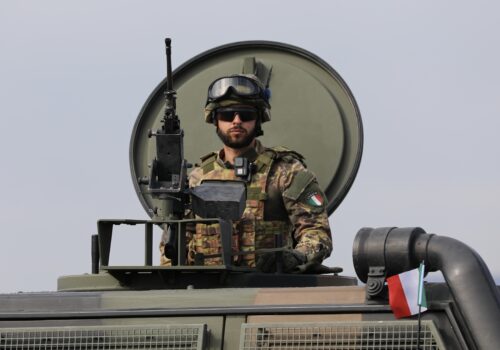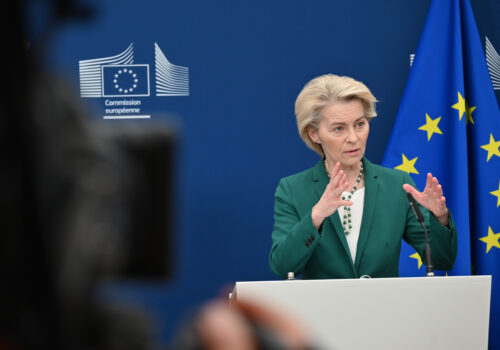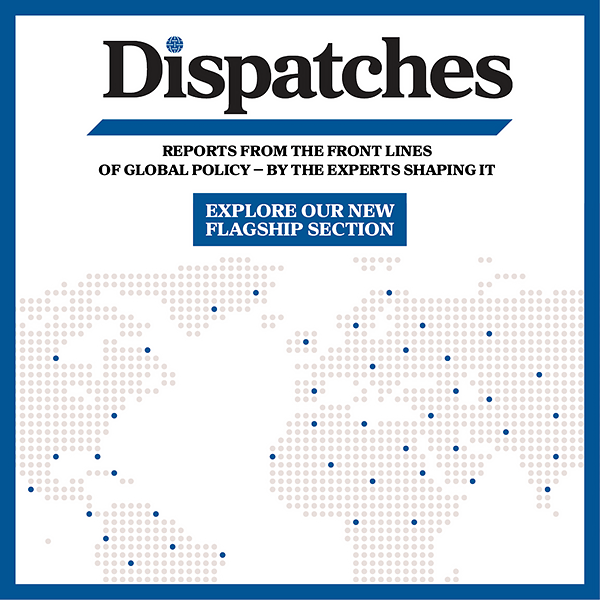Italian Prime Minister Giorgia Meloni arrives in Washington on April 17 at a precarious moment for transatlantic relations. Against the backdrop of Washington’s resurgent tariff-driven protectionism, a strategic rift over Ukraine, and signs of mounting US distrust in European leadership—exemplified by the Signal-gate episode—Meloni faces a diplomatic tightrope walk. She must defend Italy’s economic interests, sway the US administration away from a tit-for-tat trade war against the European Union, and reaffirm the importance of transatlantic unity—all while facing creeping domestic and European skepticism about her ability to deliver.
Meloni’s Washington visit is the first for a European leader since President Donald Trump’s “Liberation Day” tariffs, and it represents a litmus test for the future of US-European Union (EU) relations in an evolving global landscape.
Headwinds for trade ties
With two-way trade in goods and services with the United States exceeding $126 billion, Italy’s economy is among the most vulnerable in Europe to US trade retrenchment. The United States is now Italy’s top non-EU export market, valued at $76 billion in 2024 and representing 10 percent of the country’s total exports. Italy is also the third-largest EU exporter to the United States after Germany and France. But that interdependence between “unshakable allies” is a double-edged sword.
Much of the recent growth in Italy’s trade surplus with the United States—marked at $43.75 billion, the third-highest among EU member states—stems from sectors now in Washington’s crosshairs: industrial machinery, pharmaceuticals, chemicals, textiles, and food exports such as cheese, pasta, and wine. For instance, industrial exports alone accounted for roughly $27 billion, and Italy sends a quarter of its wine exports to the United States—about $2.16 billion annually. Similarly, a quarter of Italy’s pharmaceutical exports, valued at $14.6 billion, cross the Atlantic.
Confronted with three tariff regimes—25 percent on automobiles, 20 percent on steel and aluminum, and all-encompassing “reciprocal” tariffs at 10 percent (temporarily reduced from 20 percent)—Italy could see its gross domestic product contract by 0.4 to 0.6 percentage points over the next two years, risking the loss of over fifty thousand jobs, according to an early report by Confindustria. For an economy heavily reliant on signature exports and deeply embedded into Germany’s industrial supply—and with limited fiscal leeway for countermeasures—the contraction would not only hit hard at home but also stoke unease in Brussels, where Italy’s poor economic performance linked to its immense public debt are a perennial concern for the European Union’s stability. As a further indication of the mounting pessimism about the country’s ability to absorb such shocks, Italy’s stock market was the hardest hit among Western economies in the days after April 2.
A calculated balancing act
Since taking office in 2023, Meloni has sought to brand herself as a pragmatic conservative—capable of bridging European priorities with her electoral base, all while remaining unexpectedly closely aligned with Washington’s evolving agenda. In a recent Financial Times interview, she dismissed the notion of choosing between the United States and the EU as “childish,” instead advocating for strategic engagement with both. She took a similar approach to recent Ukraine talks, offering cautious support for defense initiatives while avoiding moves that could alienate Washington—a reflection of Meloni’s broader strategy to engage without provoking.
That approach is now evident in her government’s response to US tariffs. While Paris has called for triggering the EU’s anti-coercion mechanism, Rome has prioritized dialogue. Foreign Minister Antonio Tajani underscored the “existential” urgency to avoid “a transatlantic trade war that would destroy our companies.” While there is logic in this approach, it risks weakening Italy’s ability to adapt to a fragmenting global trading system. While others begin exploring what an EU with a less involved United States might look like, Italy continues to advocate for a slower approach, one that seemingly does not yet accept that these changes are here to stay.
Advancing Italy by elevating Europe
Meloni’s visit is not just about Italy—it’s about Europe. As the first EU leader to travel to Washington since April 2, she has a unique opportunity to serve as a conduit between a strained EU and a transactional US administration. But that role is fraught with risk. A purely Italy-centric approach would play into Trump’s preference for country-by-country dealmaking, weakening the continent’s leverage and exacerbating its divisions.
Meloni should then frame European unity not as a threat to Trump’s agenda, but as a force multiplier for the transatlantic partnership, or the “West,” one of Meloni’s favorite terms. A “zero-for-zero” agreement on industrial tariffs could be a symbol of renewed cooperation, or at least a new baseline for broader adjustments, and drive home how much easier and efficient it is to deal with one bloc at the negotiation table, instead of twenty-seven individual countries.
Arriving in Washington shortly after EU Trade Commissioner Maros Šefčovič, Meloni has the chance to double down on Europe’s commitment to reducing intra-EU non-trade barriers, so the single market can “level the playing field.” This includes unleashing further investment opportunities for US export-driven sectors such as energy, tech, and defense, while defusing escalation over irritants concerning value added tax or digital service taxes. It will be essential to frame Europe as a trusted alternative to dependence on China, thereby aligning with Trump’s priority of repositioning industrial and economic policies to tackle those that have exploited the global trading system and address nonmarket practices, overcapacities, and intellectual property theft.
This meeting is not just about Italian exports. If tariffs escalate, Europe may retaliate, imperiling cooperation on broader issues and leaving Italy worse off. The transatlantic relationship has weathered trade spats before, but today’s stakes are higher. Ironically for a leader who rose to prominence in nationalist and Euroskeptic circles, a strong, united, EU-wide message may now be Meloni’s best chance at defending Italian interests. Meloni has a complex task ahead of her, presenting to Trump a unified, nonthreatening EU open to dialogue—but one with the tools to counter a prolonged tariff regime. Failure to achieve this balance risks backfiring, angering all of her constituencies on both sides of the Atlantic.
A strategic crossroads
The Italian leader has a history of defying expectations, especially in her foreign policy decisions. For example, upon taking office, she continued Italy’s support for Ukraine and did not renew Italy’s membership in China’s Belt and Road Initiative. Yet, this moment calls for more than tactical diplomacy. Meloni must resist the temptation of short-term wins and instead articulate a long-term vision of Italy—and Europe—as indispensable partners even in a reimagined global playing field. It would work in Italy’s favor, as well as that of the United States and the entire EU.
Rome has long punched below its weight on the international stage. This visit offers Meloni the chance to change that, and she has long wanted this moment to prove her leadership and leverage her established political capital. But she will succeed only if she steps onto the stage not just as Italy’s leader, but as a credible steward of transatlantic unity.
Nicholas O’Connell is a nonresident fellow at the Atlantic Council’s Europe Center.
Jacopo Pastorelli is a program assistant at the Europe Center.
Correction: This article was updated on April 15, 2025, to reflect the fact that one quarter of Italy’s wine exports go to the United States. A previous version incorrectly stated that one quarter of Italy’s cheese exports go to the United States.
Further reading
Fri, Mar 21, 2025
Italy can play a role in the Indo-Pacific—but must do it its own way
New Atlanticist By Lorenzo Termine
Rome should focus on a pragmatic approach to the Indo-Pacific that balances regional commitments with national priorities, including security concerns closer to home.
Wed, Dec 18, 2024
Beyond NATO’s 2 percent threshold: How can Italy meet the challenge?
New Atlanticist By
For the past decade, Rome has leaned more on deploying its troops abroad to contribute to the Alliance than on increasing its overall defense spending. That needs to change.
Tue, Apr 8, 2025
The EU could respond to Trump’s tariffs with a new ‘anti-coercion instrument.’ Here’s what to know.
New Atlanticist By
Confronted with the latest round of US tariffs, the European Union is considering a new but untested tool in its economic-security toolbox.
Image: Italian Prime Minister Giorgia Meloni speaks during a press conference with Swedish Prime Minister Ulf Kristersson (not pictured), in Rome, Italy, February 26, 2025. REUTERS/Remo Casilli.
